By Peter Suciu
Admirers of arms and armor should at least make ONE pilgrimage to the Metropolitan Museum of Art in New York City. It has the largest, and easily one of the finest, collections of arms and armor in North America. Founded in 1912, the collection comprises more than 14,000 pieces. Thousands are on permanent display in the Arms and Armor Galleries, reorganized in 1991; the remainder is stored with portions being brought out for view from time to time.
Located on Manhattan’s Upper East Side adjacent to Central Park, the “Met” is a favorite cultural center with its impressive collections of artwork from every corner of the globe. As with its other collections, the Met’s arms and armor are captivating as much for their artistic merit as for their historical importance. Divided by period and culture, the collection shows how military implements mirrored the cultures of their times. Almost the entire collection consists of items crafted before 1900, and much of it dates far further back than that.
“For example,” says Stuart W. Pyhrr, curator in charge of the department, “we have the best collection in North America of high-end finely made armor.” Of the European armor, much is from the Renaissance and Baroque periods. Some pieces are of the tournament and parade variety, some are field armor, but all are visually very impressive.
“Parade armor was lighter and more detailed than a piece meant for tournament or battle,” says Pyhrr. And all of it reflected the fashions of the day, he points out, especially the breastplates and the armor over the wearer’s feet. Most of this didn’t actually affect protection so much as mirror what a knight or lord might wear in his civilian garb.
A good deal of the European collection is from Germany or Italy, two regions that produced some of the highest quality arms and armor. Today these shining suits of metal greet visitors to the gallery’s main hall, designed to be reminiscent of a medieval castle. In fact, adorning the high ceilings are nonhistoric banners, artistic representations of the pseudo heraldry of the legendary Knights of the Round Table. “During the 15th century in England, coats of arms were created for these ‘knights,’” explains Pyhrr. “The museum decided to put them to use.” The banners add texture and color to the sunniest hall of the collection, and adorn areas where medieval textiles would be damaged by too much ultraviolet radiation.
The Old World Arrives in New York
The collection of arms and armor made its way to the United States following the founding of the gallery at the turn of the century, and later during the Depression in Europe, especially Germany, where many museums were forced to sell off parts of their collections just to maintain the rest. Much of this was a great boon to the Met, which saw its once-humble assortment grow to one of the most respected in the world.
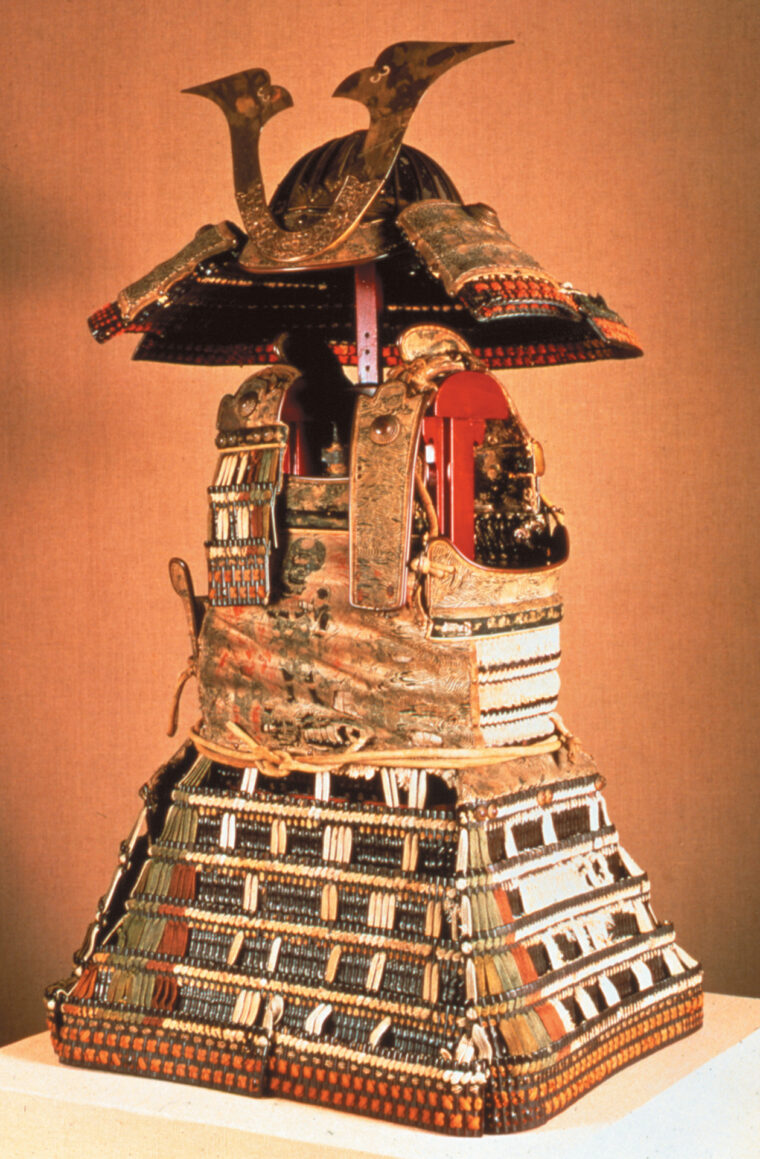
In addition to European arms and armor there are pieces from unexpected quarters, including fine examples from Asia, Islamic countries, and even North America. While it is possible to see the entire permanent collection in a few hours, it is safe to say that the Met can enthrall visitors for a lifetime with its unique and unusual pieces.
Much of this owes to the first curator, Dr. Bashford Dean (1867-1928), who single-handedly established the department as one of the foremost collections of its kind. The Met received its first examples of arms and armor in 1881, but it was Dean who established a separate department in 1912. As such it remains the only one of its kind in the United States today. Dean oversaw the rapid growth of the collection, and even acquired many of the “second best” items for himself, which in turn inspired a generation of American collectors of the era, many of whom would later make generous donations to the museum.
A key acquisition for the Met came from William H. Riggs, an American who donated nearly two thousand pieces—including some of the finest examples of French armor on display today—to the museum in 1913. This was followed by outstanding donations of swords and daggers in 1926 by respected European collector Jean Jacques Reubell. When Dr. Dean died in 1928 he left to the Met his own collection of more than a thousand pieces.
To this day, unique and otherwise irreplaceable items make their way to the collection through private donations. These include a notable collection of colonial-era engraved powder horns that were donated by the widow of Grenville Gilbert in 1937, and a highly prized group of Colt revolvers presented to the museum by pioneer enthusiast John E. Parsons.
Since the department’s reorganization in 1991 a few other outstanding donations have further enhanced the collection, including a gift of one-half of a pair of legendary Colt revolvers. Samuel Colt personally gave this firearm to the Sultan of Turkey during the Crimean War. He presented its mate on the same trip to Czar Nicholas I. Both firearms survive today, the Russian one on display at the Hermitage Museum in St. Petersburg. The “Sultan” revolver was donated to the Met by dealers George and Butonne Repaire.
Armor from the Near and Far East
Most of the Met armor collection is European, but there are also dozens of equally impressive pieces from other faraway lands. Notable are Islamic materials, which had been long overlooked by collectors and scholars alike. Today Islamic armor is much more appreciated, giving insight to the Muslim countries that created these stunning pieces of work.
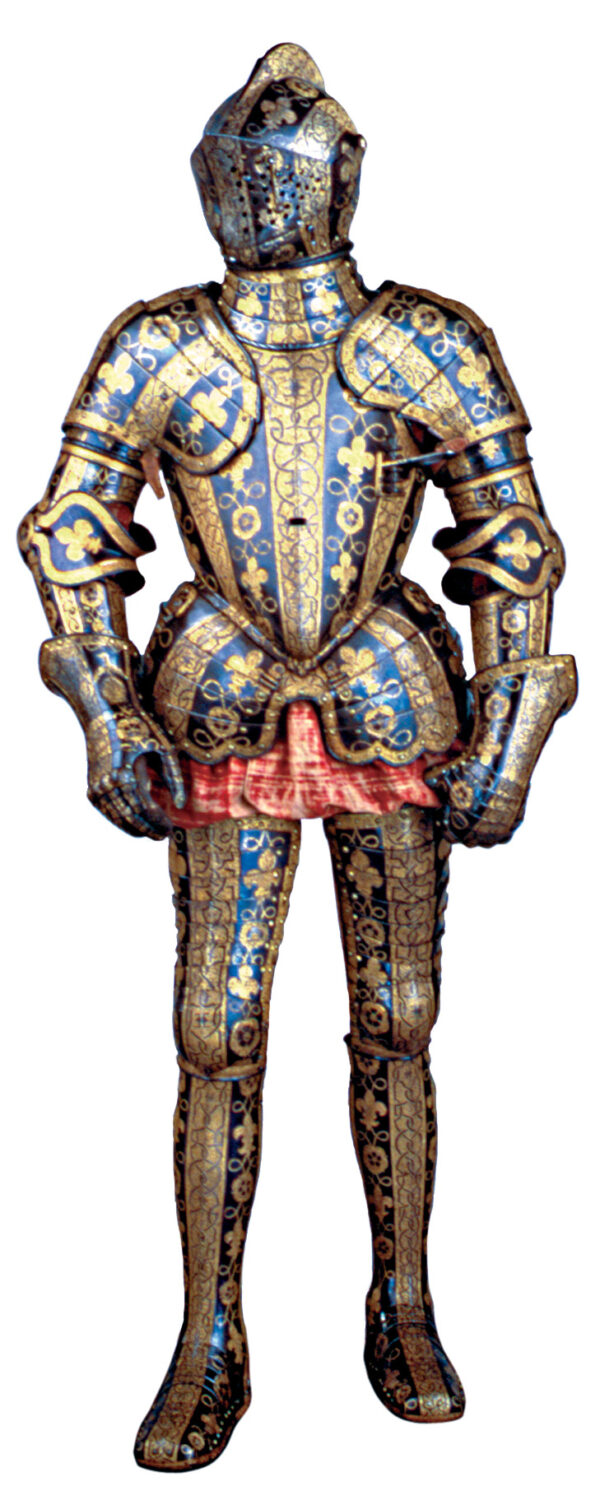
A good deal of the Islamic collection, which includes 15th-century Iranian and Anatolian turban helmets, were original pieces acquired by Dean in 1904. In addition, the daughter of collector Giovanni P. Morosini presented a group of richly jeweled Ottoman Turkish edged weapons to the Met in 1923, and the Islamic arms permanent displays were greatly benefited by the addition of some four thousand pieces bequeathed by George Cameron Stone in 1934.
Many of the Islamic arms and armor came by way of the Topkapi Museum in Istanbul. While building their empire, the Ottoman Turks collected vast amounts of historically significant pieces. But sadly, much of this was sold on the open market to art collectors when the Topkapi undertook a massive housecleaning. Fortunately, many of the pieces remained together and some, like the Colt revolver, have made their permanent home in New York City.
Notable among the Islamic displays is a prized piece for the Met, a rare and highly detailed Ottoman Yataghan sword, the traditional blade of the Turkish warriors, which features a walrus ivory and gold handle with silver, ruby, turquoise, and pearl inlays. This 16th-century blade is from the court of Süleyman the Magnificent; its mate is in the Topkapi. Other outstanding pieces in the Islamic collection include an Indian dagger from the Mughal period (17th century) that shows the splendor of the region’s artisans, and a 17th-century Indian coat of chain mail, which clearly shows the different styles of craftsmanship that went into making mail armor.
In addition, the Met has a renowned collection of Japanese arms and armor, which Pyhrr declares is the largest and most respected outside of Japan. “There are more than 2,500 pieces of armor and sword furniture,” he says, “including tsuba (handguards—see Military Heritage, April 2003 issue). This owes again mainly to Dr. Dean’s efforts. He attracted many pieces dating back to the 14th century. They were very lucky finds.”
As at the Topkapi Museum, it was common to find that suddenly the Japanese were not interested in their history. This followed the Japanese rapid modernization at the end of the 19th century. Noble families in Japan suddenly sold off collections of Edo and early-period arms and armor, especially after Imperial decree forbade the wearing of swords. Dean made two visits to Japan, first in 1900 and then in 1905, and his acquisitions formed the core of two personal collections, the first assembled in 1904 and sold to the museum, and the second donated by him in 1914 after he ceased collecting in this area.
Today, thanks to generous gifts, the Japanese collection comprises thousands of pieces of armor, swords, fittings, and other accouterments, many of which are on permanent display. They include notable pieces such as the museum’s earliest blade, a tanto (Samurai dagger) from the Kamakura period (1185-1333) and a katana blade (Samurai long sword) from the Muromachi period (1392-1573). The prized piece is a complete set of Edo-period (1615-1868) armor of the Gusoku type.
Although small compared to the Japanese arms and armor collection, the permanent displays of Chinese and Korean artifacts, as well as the new addition of Tibetan pieces, are also impressive. Many of these works reveal ethnic characteristics, especially the Tibetan, some of which are rare wicker shields with iron fittings dating to the 14th and 16th centuries, and a set of horse armor that features the distinctive influence of the Mongols. Much of the Tibetan style of armor was all but unknown to the West until a British expedition arrived in the land at the turn of the last century. Examples were taken back to Great Britain by eager British troops, but few have ever found a home in North America.
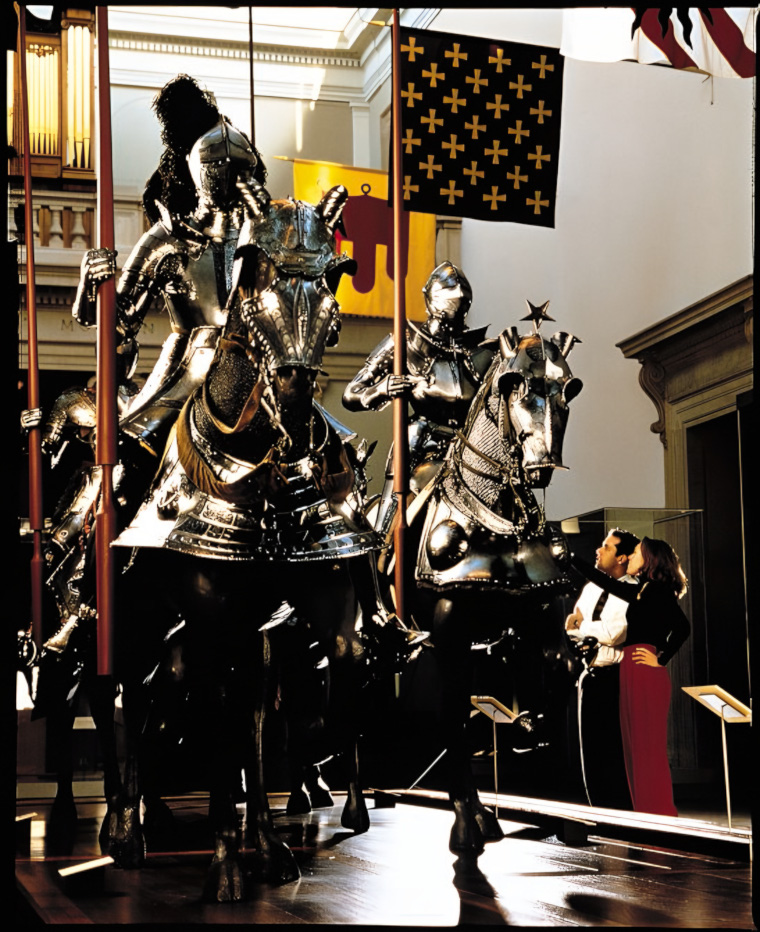
Armor As Art
Almost every piece harbors an interesting tale, often about the times in which it was produced. One of the more interesting derives from a particular cuirassier armor produced in either Milan or Brescia between 1610 and 1620. The approximately 86-pound steel suit is highly detailed in gold inlay and was obviously created specifically for a wealthy heavy cavalryman. But it is not “perfect.” The suit prominently displays dents made from pistol shots. These were not, however, sustained in battle, but derive from the hand of the suit maker, who fired them into the armor to demonstrate its quality. “This was proof of its strength,” says Pyhrr, who adds that targeting armor was considered the standard way of testing a suit’s protective qualities. “Bullet dents were to let the wearer know that the armor would stop other bullets.”
The Met owns an impressive series of English parade and tournament armor made in the royal workshops at Greenwich for Tudor courtiers. A recent addition to the main hall is a suit of English armor once belonging to the Earl of Cumberland of the court of Queen Elizabeth I. This is actually a mixed set of field and tournament pieces allowing for numerous uses by changing helmets and breastplates. One equally notable portion is a French-made cover for a sword hilt. It is the only one known in existence and is the perfect complement to the museum’s distinguished collection of French small swords.
The Met’s collection of small arms, including flintlock pistols, breech-loading sporting rifles, and other firearms is not that extensive, but like the Samuel Colt revolver, each item has historic and artistic significance and speaks volumes to collectors. Among the notable weapons are examples of Napoleonic firearms and the famous “Kentucky” flintlock rifle.
Just as interesting is the later period theatrical armor used by nobility as a part of traditional pomp and pageantry. Armor of this era has long been overshadowed but is gaining appreciation for its artistic value.
Such armor has inspired countless movie costume designers—and while we often must be forgiving of cinematic representation of armor, it is worth mentioning that the Met’s head armor restorer actually used his skills to create the highly detailed and extremely realistic armor worn by actress Ingrid Bergman in the 1948 film Joan of Arc.
The whereabouts of this armor was unknown to Pyhrr, he admitted, but this is of little consequence. The Met’s arms and armor collection is magnificent and, of course, exceptionally well preserved for the appreciation of generations yet to come.
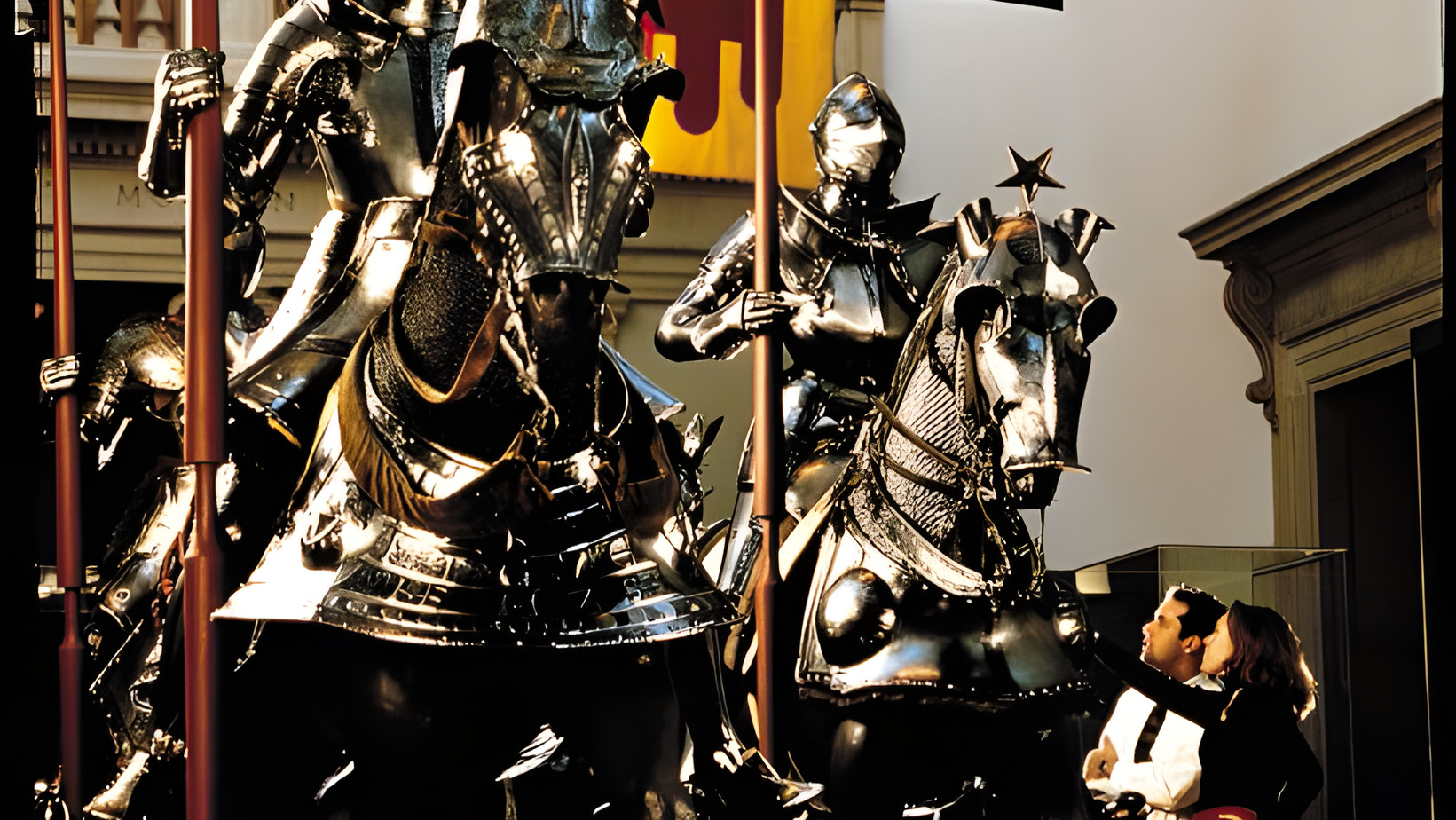
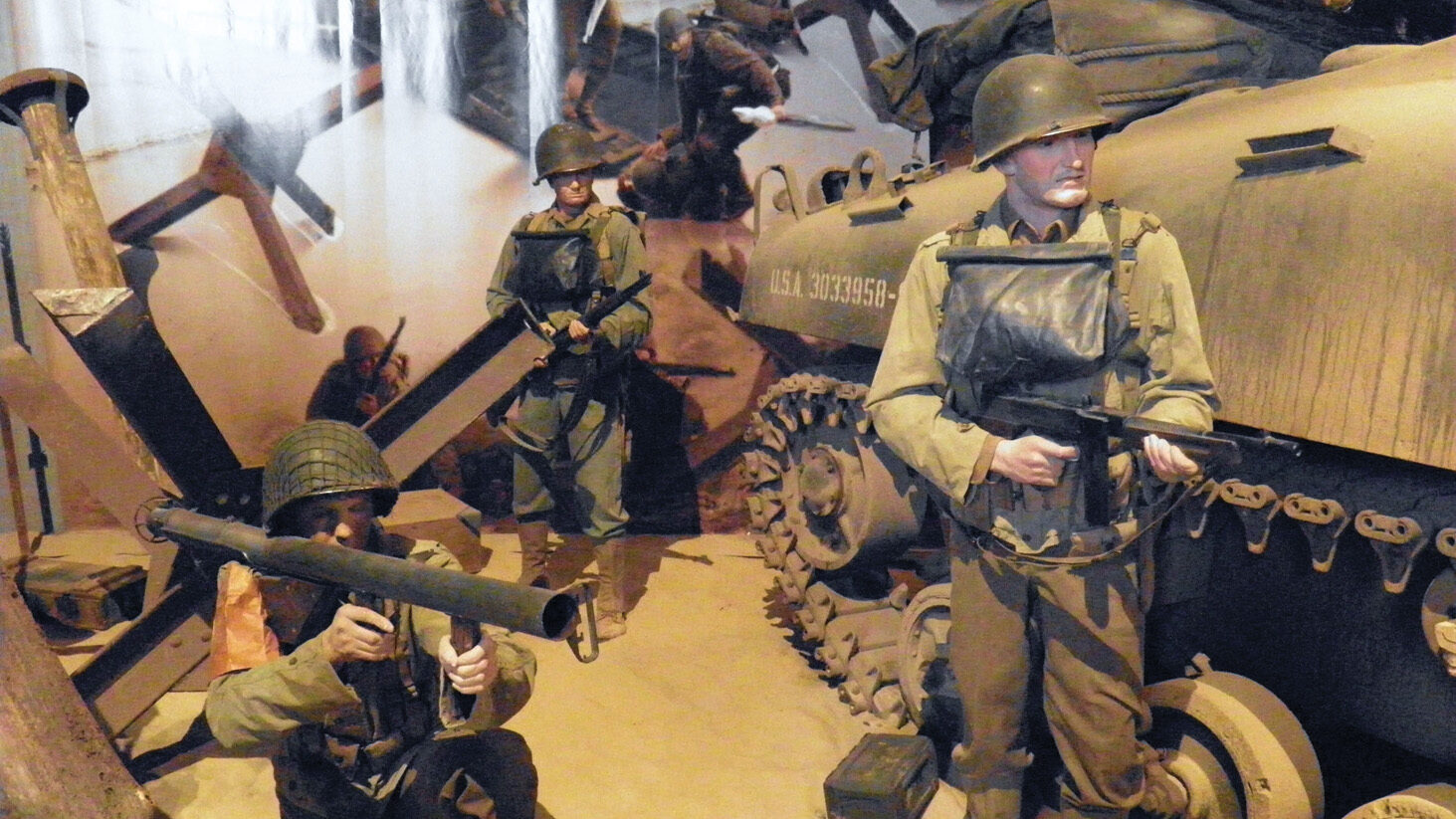
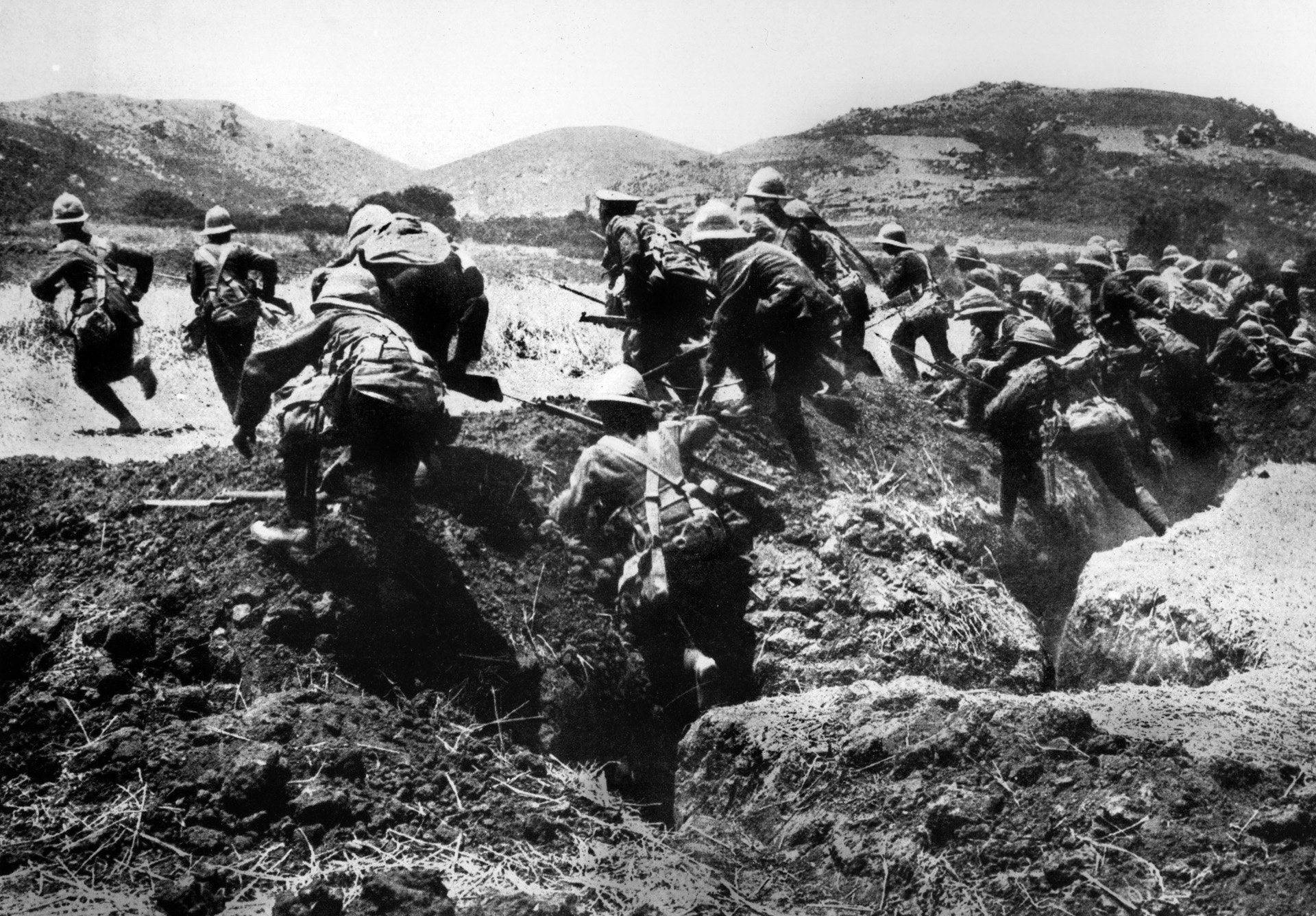
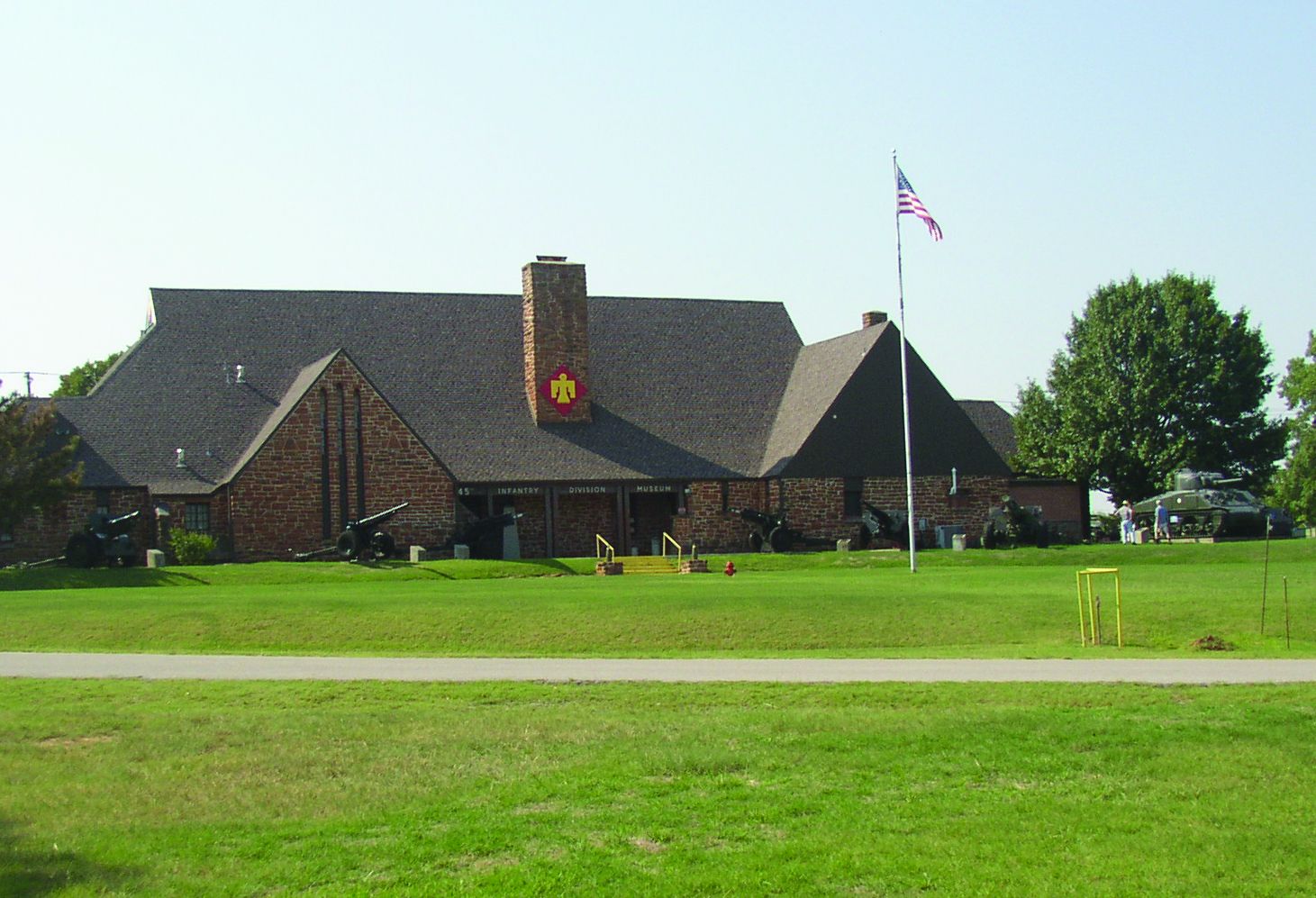
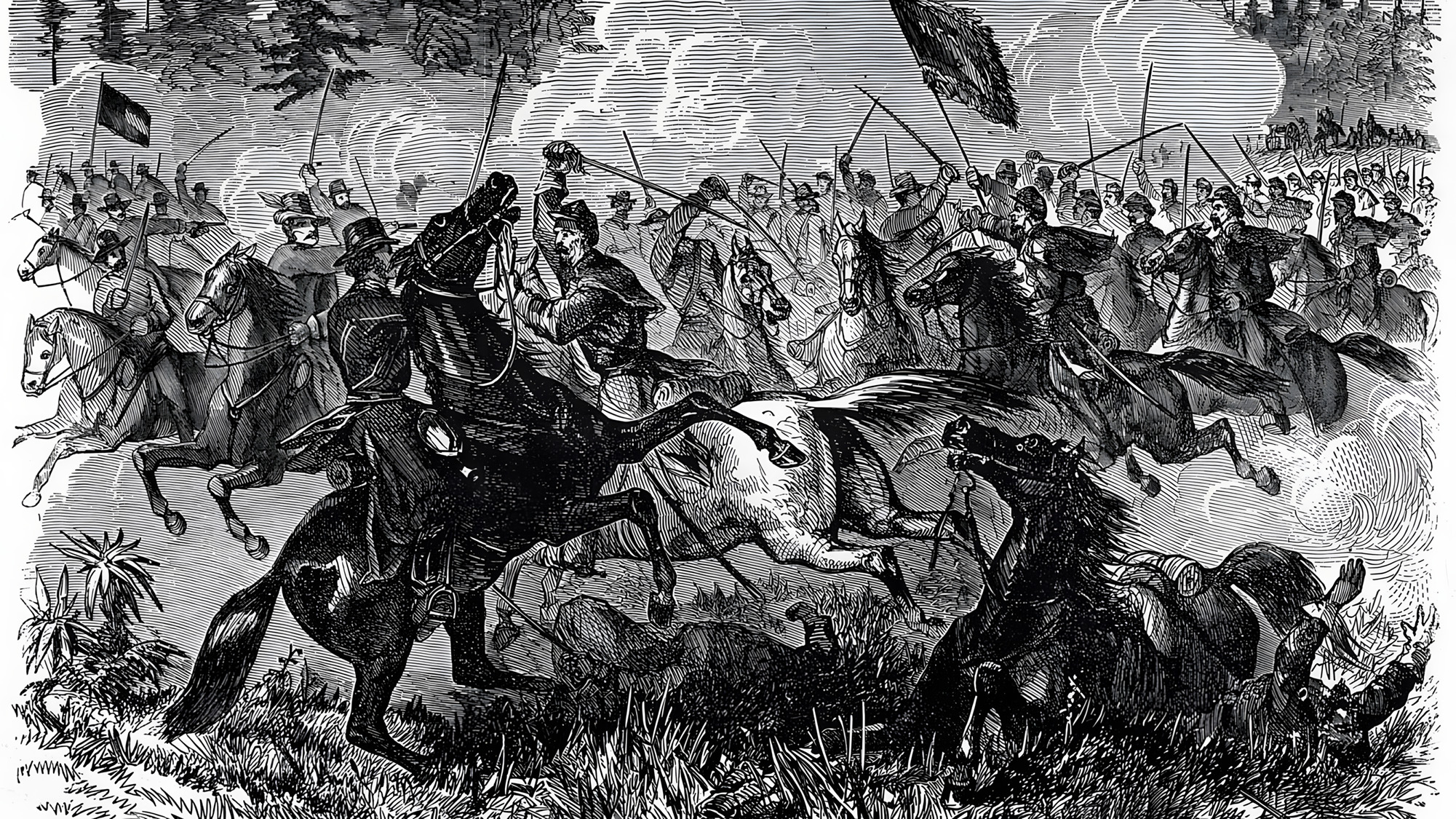
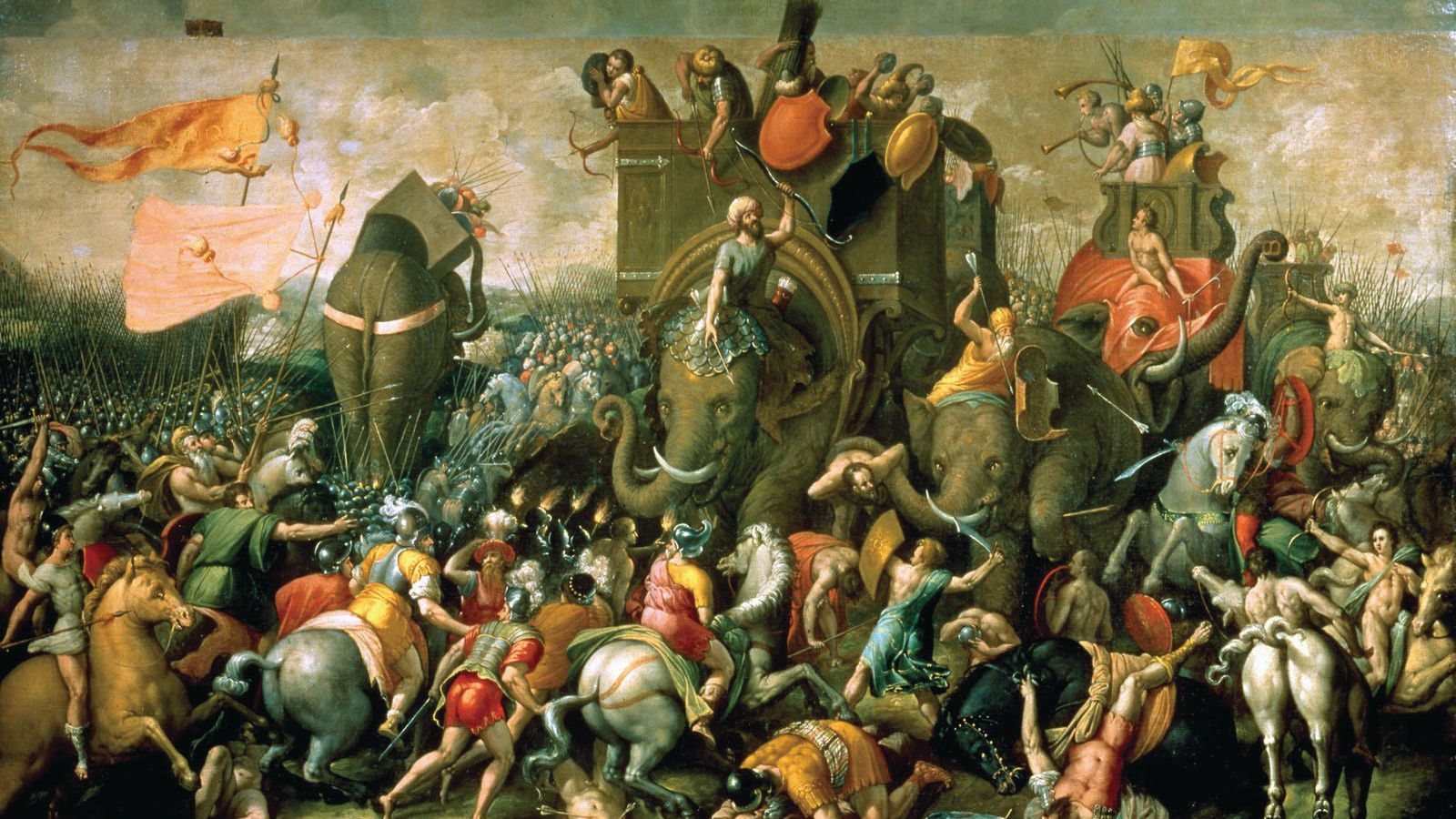
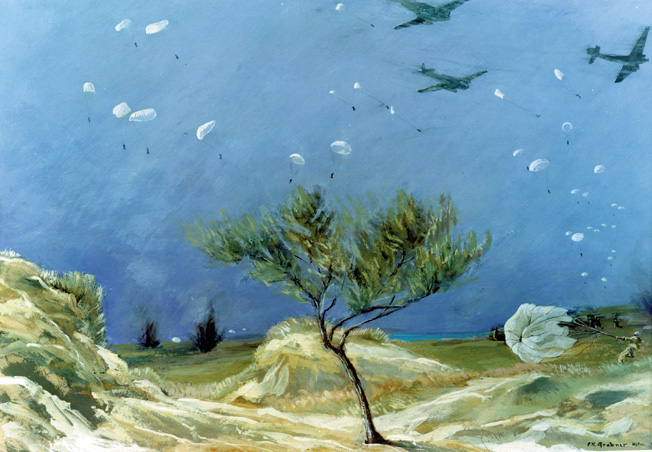
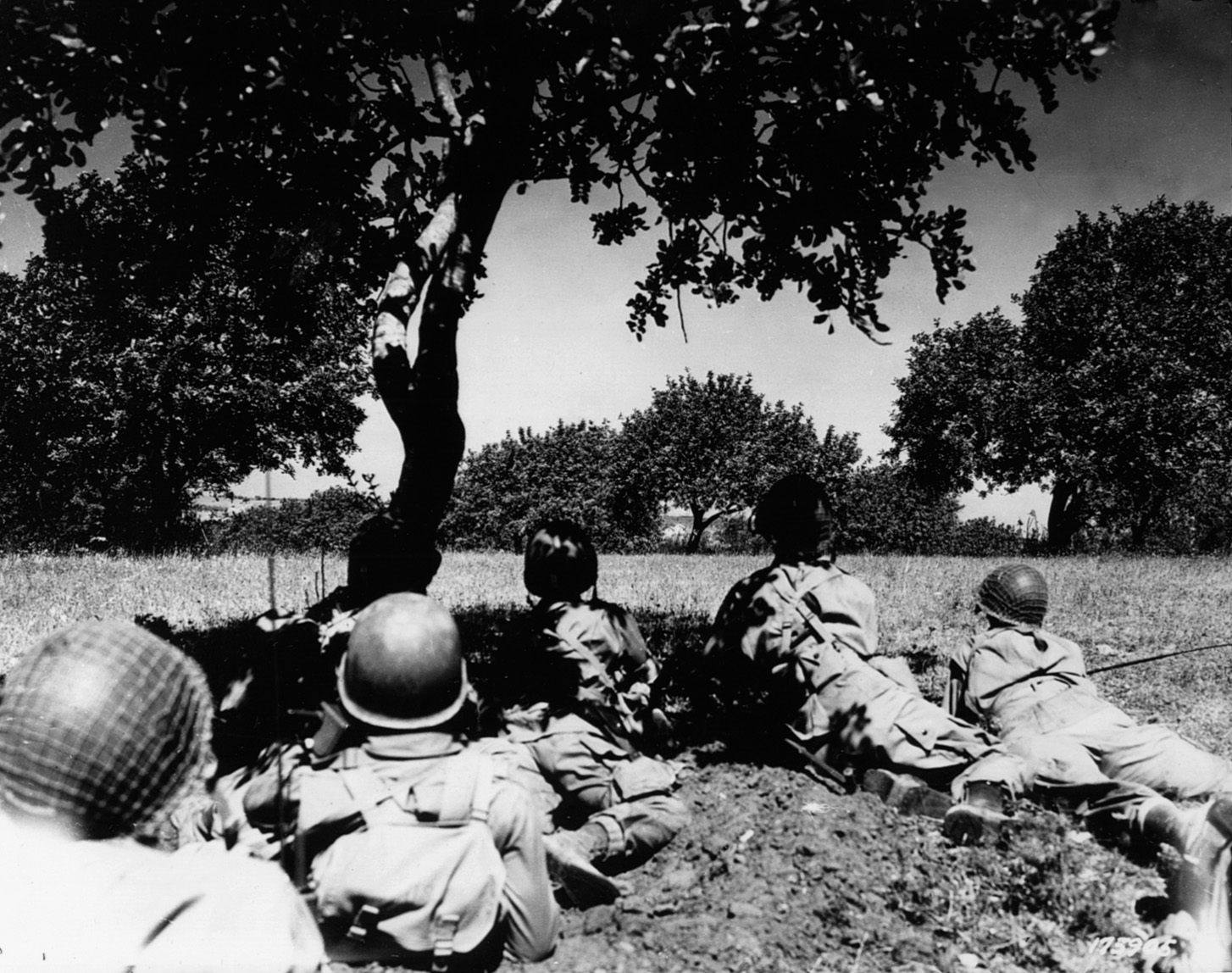
Join The Conversation
Comments
View All Comments